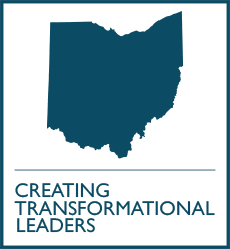Aug 26

Pharmacy Student Reflects on Mayo Clinic Internship
Momitul Talukdar, a third-year pharmacy student at NEOMED, writes about her experience at the Mayo Clinic, where she interned. In her words…
Last summer, I had the incredible opportunity to intern at the Mayo Clinic in Rochester, Minn. This 10-week summer pharmacy internship is designed to immerse rising third-year pharmacy students into every area of pharmacy practice. Ranked No. 1 in the nation by U.S. News and World Report, the Mayo Clinic is nothing short of amazing.
I wanted to learn from one of the largest, most advanced, integrated health care systems in the world. I, along with eight of my co-interns from across the nation, was selected for this competitive internship. From May 16 to July 22, I worked alongside brilliant pharmacists and providers with a focused vision — patients come first.
This project-based internship gave me the autonomy to develop essential skillsets in project management and professional development. Mondays serve as professional development days where I networked with pharmacy leaders from various specialties. Fridays allowed me to shadow pharmacists in different areas of pharmacy practice. On Tuesdays, Wednesdays and Thursdays, I spent time working on my various projects. From presenting claims data on PCSK9 inhibitors [a type of cholesterol-lowering drug] to a cardiovascular task force, collecting data on reduced alteplase dosing, creating pharmacology lectures for pharmacy technicians, to seeing the implementation of a beta lactam therapeutic drug monitoring program in the ICU, there were plenty of exciting projects I was a part of.
QUICK THINKING
One of my most exciting experiences was when I was shadowing the pharmacist in ambulatory care. A physician with her new resident approached the ambulatory care pharmacist and me. “Hey, we have a 2-year-old female presenting today with exacerbations, she failed inhaler therapy since the parents thought the inhaler was too expensive. What’s an alternative?” My brain went immediately to GINA guidelines. I asked, “What about a leukotriene antagonist?” I saw my pharmacist turn around, the physician and the resident both raise their brows, “Wow, I haven’t thought about that. How young can you prescribe that for?” I responded, “I believe 12 months but let me double check.”
I quickly pulled up Lexicomp on the computer, “Yup, you can give Singulair to a 12-month-old.” The physician responded, “And what dosage form would you recommend?” I looked back at my pharmacist, searching for an answer, and saw her Duchenne smile under her mask. She trusted me for what I was about to say. “I’d recommend the chewable tablet over granules, 4mg at bedtime, unless the patient doesn’t have teeth. Does the patient have teeth?” The physician smiled, “They sure do!” I saw my pharmacist’s eyes light up and the physician turn to her resident, “Alright, let’s look up prices for a 4mg chewable tablet.” We rushed into a conference room for a patient call. As I sat down, she whispered, “Good job.” Those two words validated my long days of studying and gave me much needed confidence in myself.
Another exciting experience was in the emergency department. A patient came in for a routine CT chest scan and the radiologist found that the patient’s aorta was dissecting. The patient was rushed to the emergency department to be prepped for surgery. I watched physicians scramble on the phone to talk to a surgeon. The pharmacist looked at me and said, “Alright, look at the med list and tell me what we should do.” Being put on the spot, I frantically skimmed the medication list, “So, anticoagulation…. wait, patient got a mechanical heart valve this year and they’re on warfarin!” The pharmacist replies, “Good, and when was the last dose taken?” My eyes widened as I said, “This morning.” I immediately knew that the warfarin had to be reversed before the patient went into the operating room. I asked, “Do we have KCentra?” She replies, “We sure do! Here!” and handed me two vials of KCentra to be reconstituted. “I’ll make the 1000 unit one, you make the 500 unit one. Deal?” KCentra was a medication I only learned about in class and couldn’t believe I was seeing it, let alone reconstituting it. Mirroring the pharmacist, I reconstituted my 500-unit vial and drew up the 1500-unit dose in a syringe. Making the KCentra and helping to reverse warfarin for their life-saving procedure was an incredibly rewarding experience.
Ten weeks, 400 hours, 1,440,000 seconds and many unforgettable memories later, I left the internship with relationships and friendships that will last a lifetime. This summer was a dream. I am inspired by Mayo Clinic’s efficiency in teamwork and their humility. Every time I addressed a provider as doctor, I was corrected to address them by their first name. Mayo Clinic leads by example and sets the precedence of the practice of medicine.
Inspired by their compassion and care that I have witnessed; I have grown professionally and personally. Growth that I will certainly carry into my professional career and personal life.

